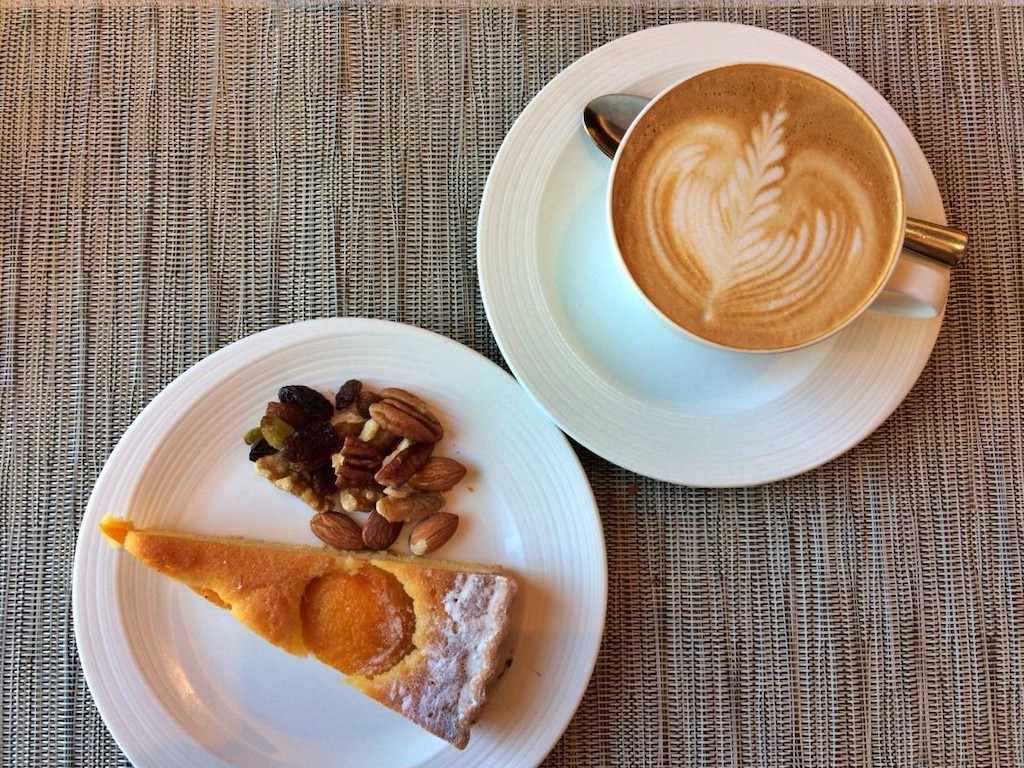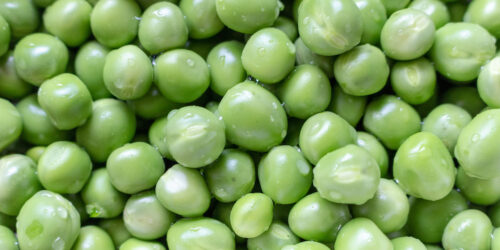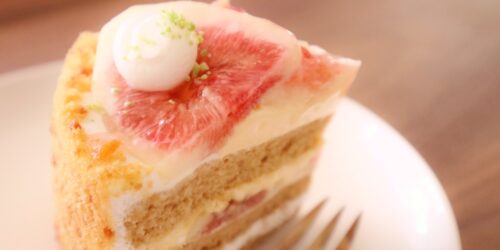29 Foods That Start with お (o) – Learn Hiragana Characters
Let’s check the list of foods that start with “お” for here.
おーどぶる (オードブル) / O-DOBURU
It’s Japanese term for “hors d’oeuvre”.
In Japan, it refers to appetizers including assorted liquor snacks and light meals that served at parties, etc.
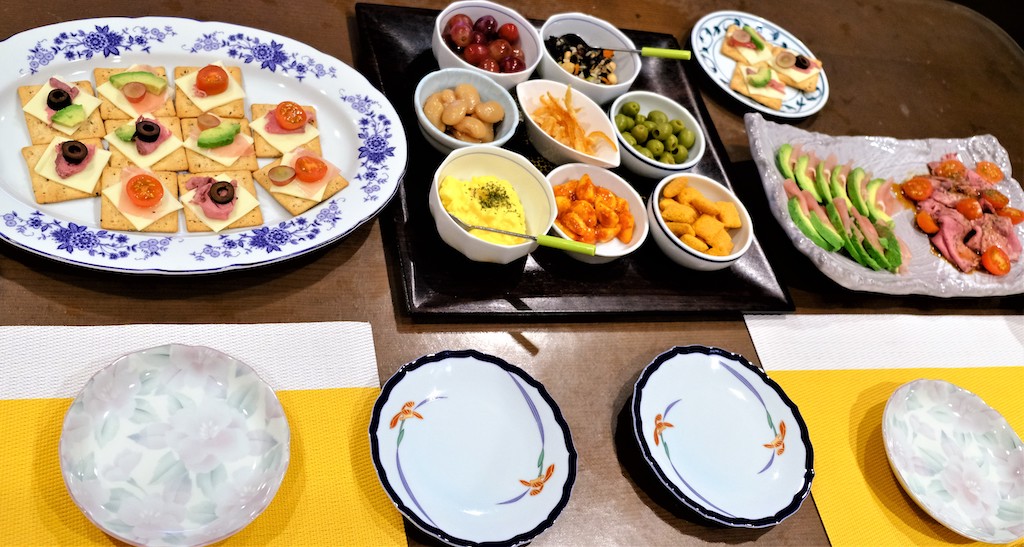
おおば (大葉) / O-BA
It’s shiso leaves which are kind of like Japanese basil. We also call it “shirso”.
It can be used as condiment, tempura material, and ingredient for various kind of dishes.

おおばんやき (大判焼き) / O-BANYAKI
It’s traditional Japanese sweets, pancakes filled with filling such as red bean paste and sweet custard cream. We also call it “Imagawayaki”.
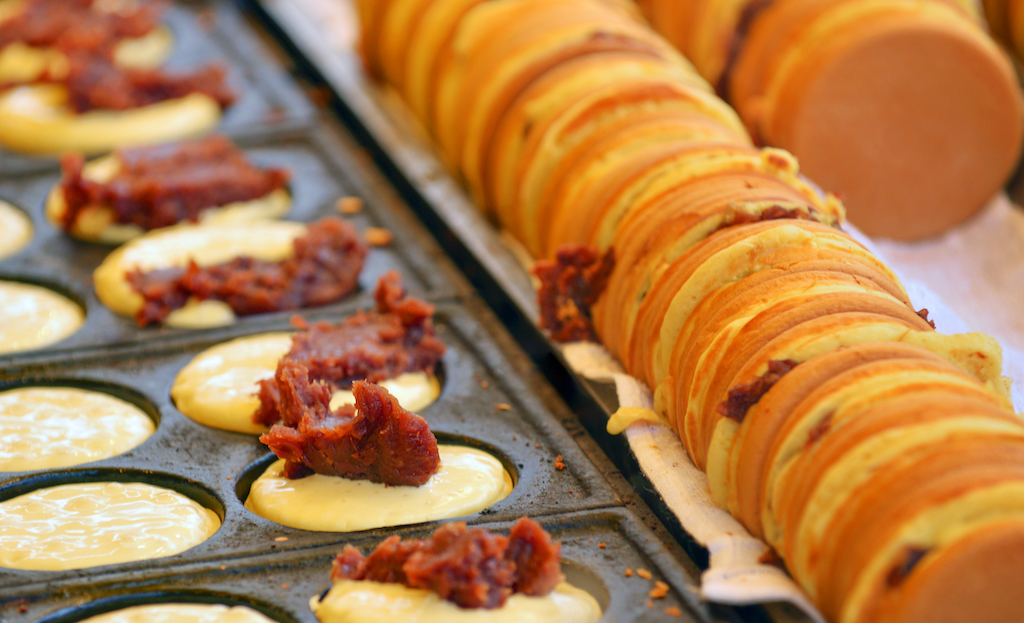
おかか / OKAKA
It’s finely chopped dried‐bonito shavings, sometimes with soy sauce.
Dried-bonito shavings are usually called “katsuobushi” among Japanese. But おかか (OKAKA) is another name for it.
When it comes to おかか (OKAKA), it’s often considered as the furikake (condiment for rice) wihch is made by simmering dried-bonito shavings with soy sauce, sake, mirin and sugar. It matches perfect with white rice.
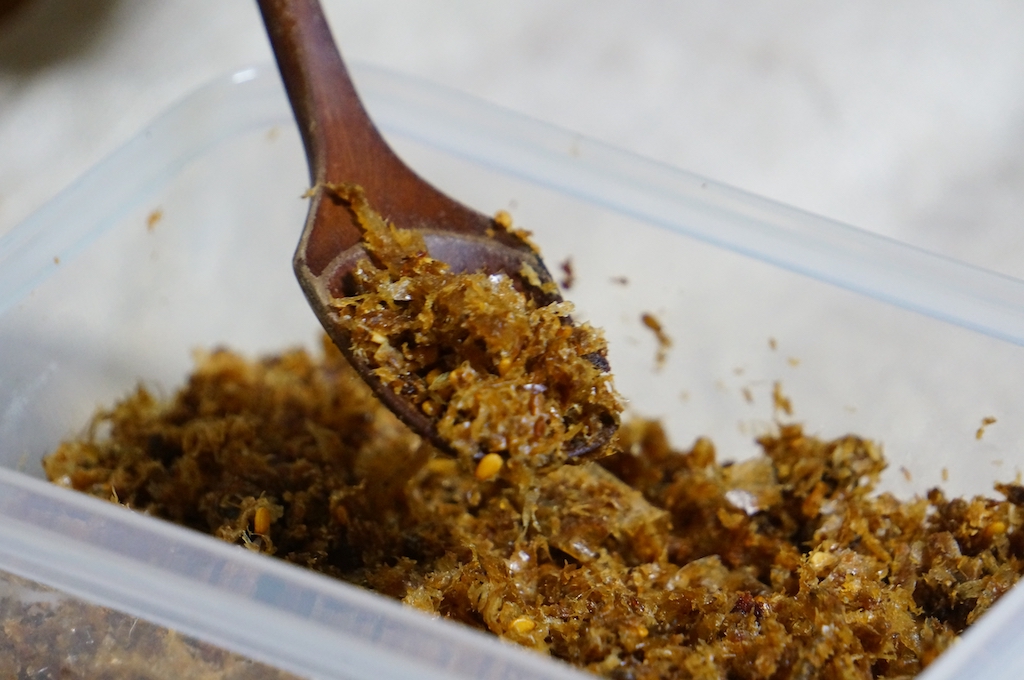
おから / OKARA
It’s the residue left when soymilk is squeezed in the process of making tofu from soybeans. We sometimes call it “unohana”.
What Is Okara and How Is It Used?
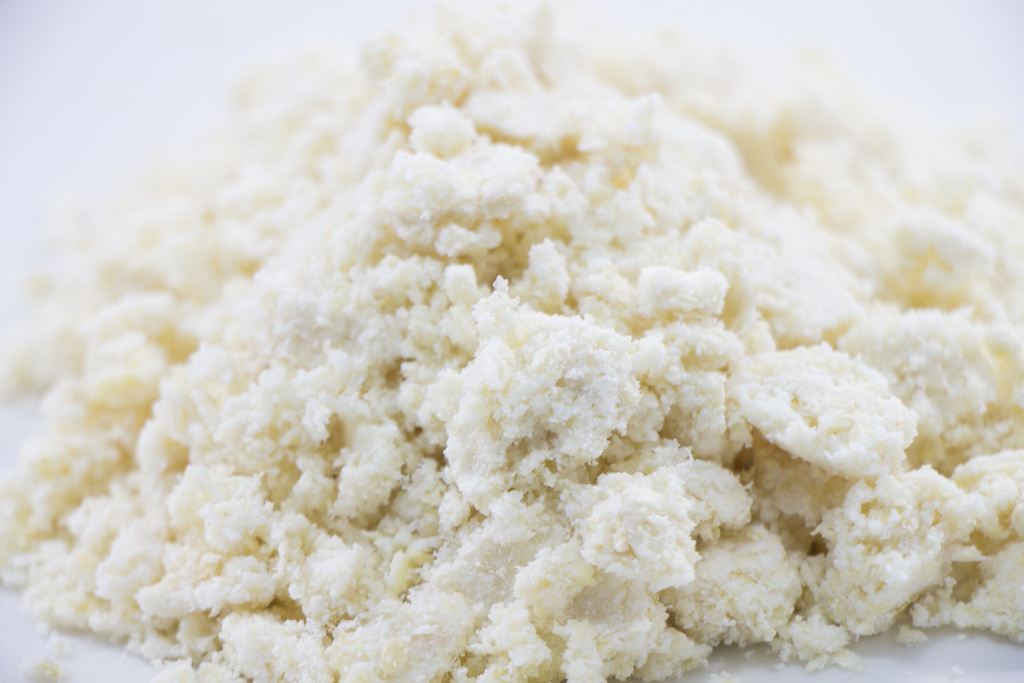
おくら / OKURA
It’s Japanese term for “okra”.
As you may know, okra can be used in various type of dishes such as boiled salad, simmering food, tempura. It has sticky texture but the simple taste and flavor can be used for any seasoning.

おぐらとーすと (小倉トースト) / OGURATO-SUTO
It’s a toast with red bean paste on top. Usually butter or margarine is also put together.
It has been known as a local food of Aichi prefecture, but widely eaten all over Japan in recent years.
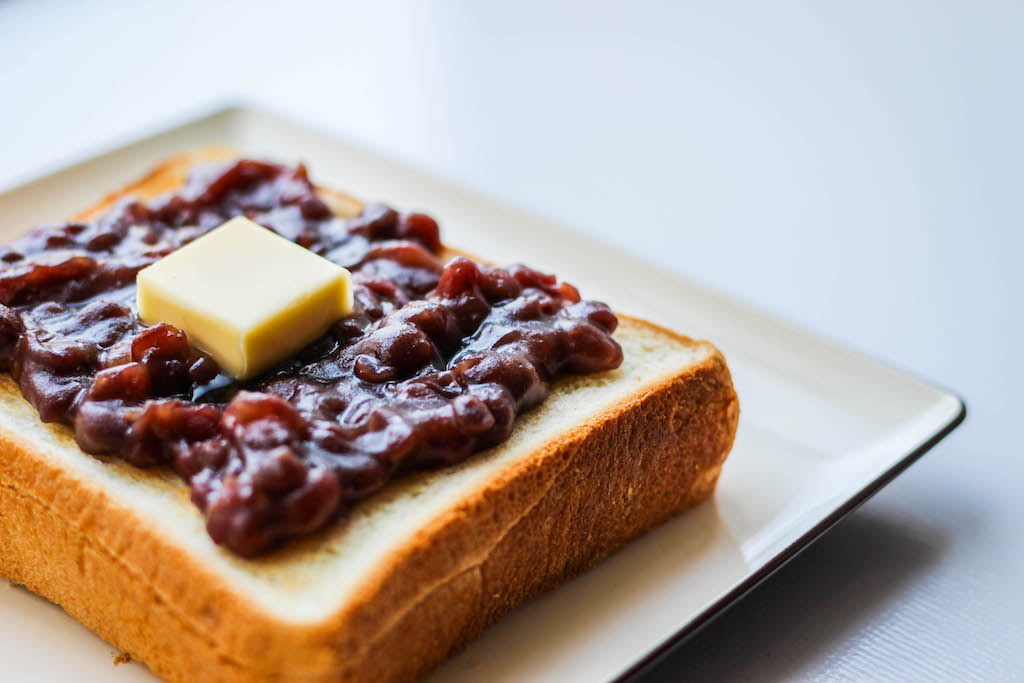
おこさまらんち (お子様ランチ) / OKOSAMARANCHI
It’s Japanese term for “kids meal”.
You often see kids meal at restaurants in Japan. Quantity, taste, and appearance of the meal are arranged for children. There are often age restrictions.
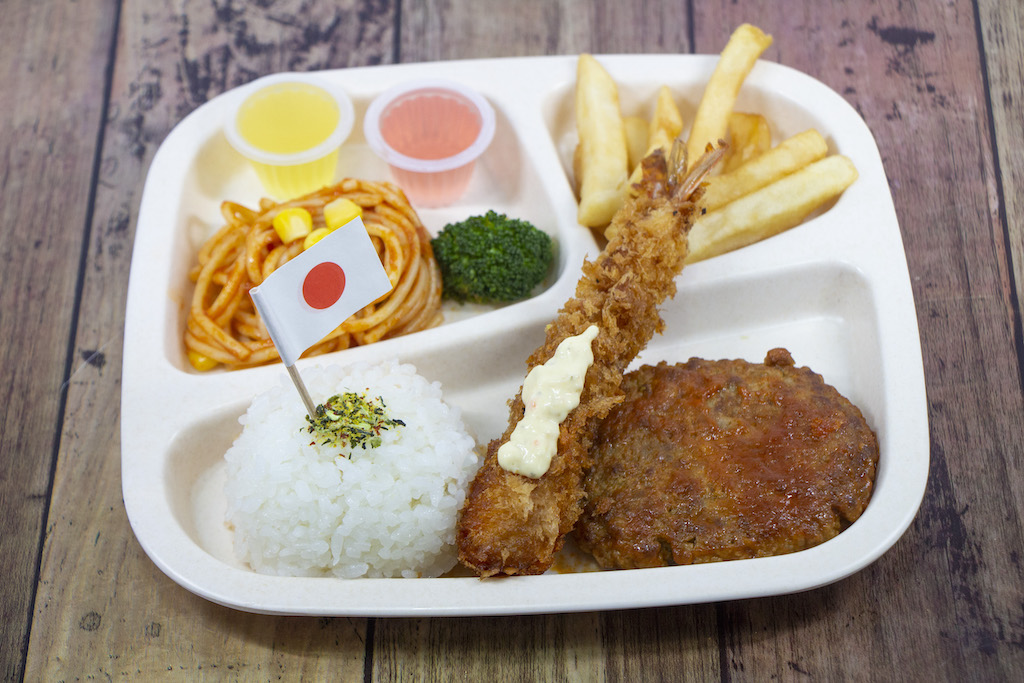
おこのみやき (お好み焼き) / OKONOMIYAKI
It’s Japanese-style pancake that is made from flour, eggs, vegetables (mainly cabbage), meat, seafood, and sometimes noodles. Usually it’s baked on an iron plate, and you eat it with the Japanese okonomi sauce, mayonnaise, and some toppings such as aonori flakes and dried bonito shavings.
Best Fluffy Okonomiyaki Recipe
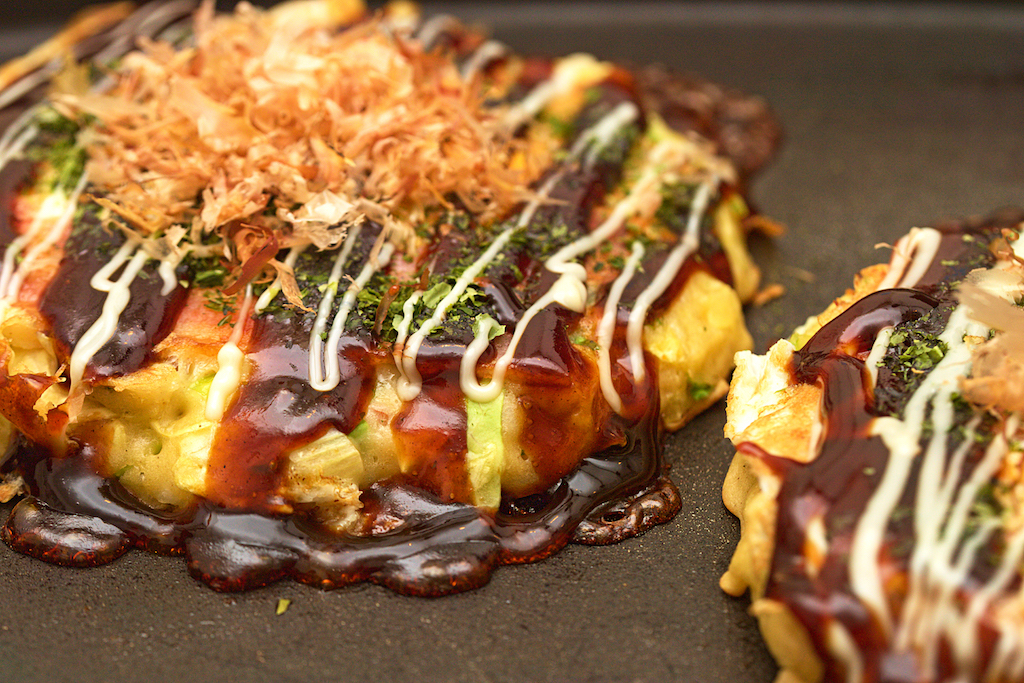
おこわ / OKOWA
It’s Japanese-style mixed rice, but not made of white rice but glutinous rice. You can mix any ingredients including vegetables, mushrooms, beans, meat, etc. おこわ (OKOWA) made from glutinous rice and red bean is called “sekihan”.
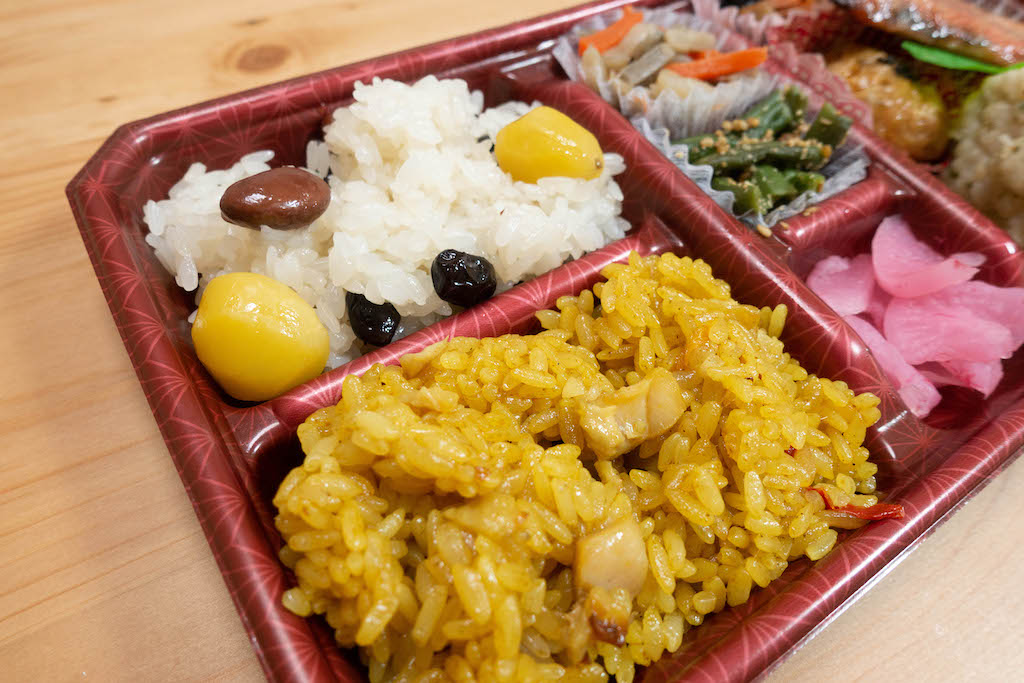
おじや / OJIYA
It’s Japanese-style congee (rice porridge). We also call it “zousui” in Japanese.
It’s usually made by simmering steamed rice, some ingredients, and dashi stock together. The seasoning could be soy sauce, miso, or anything. My mom used to make おじや (OJIYA) with leftover miso soup, egg, and rice.
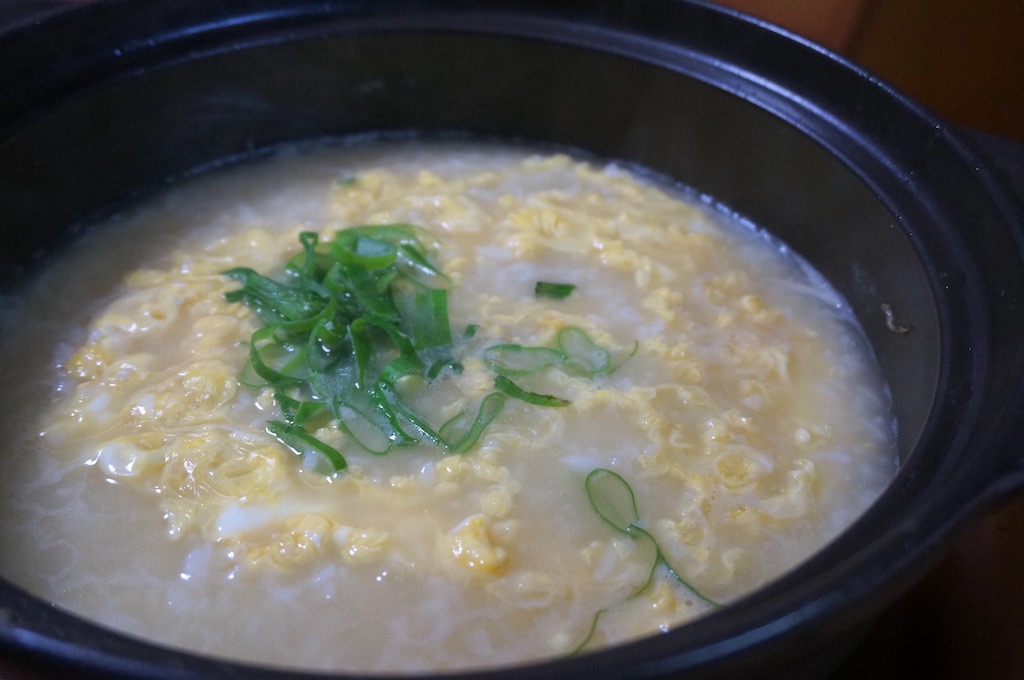
おしるこ (お汁粉) / OSHIRUKO
It’s sweet red-bean soup with mochi (rice cake). We also call it “shiruko” (Adding “o” makes it more polite).
Sweet bean paste is usually a little sticky, so you need to add water to make the soup, and put cooked mochi into it. The chewy mochi matches so well with the sweet bean soup.

おしんこ (お新香) / OSHINKO
It’s Japanese term for “Japanese pickles”. It’s another name for “tsukemono”.
Japanese pickles is not sour like a vinegar, but it’s generally just salty. There are so many kinds of Japanese pickles, and the taste totally depends on the kind. For example, nukazuke is pickles made with rice bran and brine. And it has really unique flavor of fermented bran.
What Is Nukazuke and How To Make It?
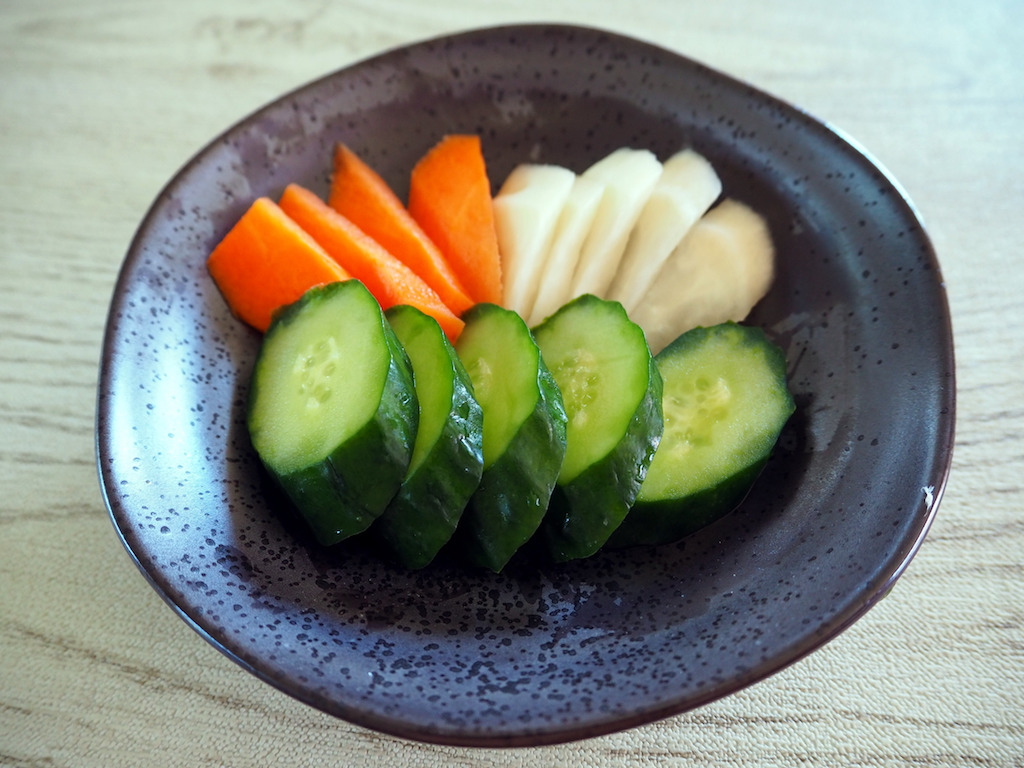
おすし (お寿司) / OSUSHI
As you may know, it’s the same term as “sushi”. Adding “o” makes it more polite.
I would say sushi is the most famous Japanese cuisine in the world. There are numerous sushi restaurants in Japan, so please try some of them if you’re visiting Japan!

おせちりょうり (お節料理) / OSECHIRYORI
おせち (OSECHI) is the traditional meal only prepared for New Year. 料理 (RYORI) means “meal”, by the way. People eat various auspicious ingredients in the osechi box to pray for good health and great harvest for a year.
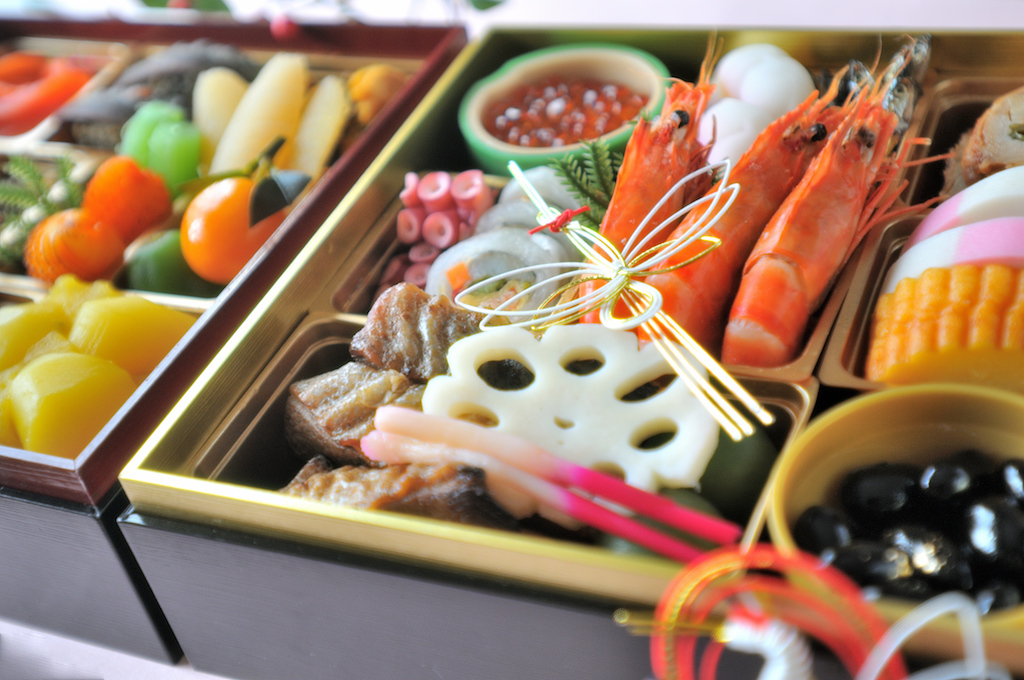
おぞうに (お雑煮) / OZONI
It’s Japanese traditional soup dish using mochi for New Year’s. We also call it “zoni”. Adding “o” makes it more polite.
You make the soy sauce based or miso based soup with favorite meat and vegetables. Then, put mochi (rice cake) into it. It’s one of the must-eat dish on New Year.

おちゃ (お茶) / OCHA
It’s Japanese term for “green tea”. You can also call it “cha”. Adding “o” makes it more polite.
Green tea is one of the most common drink in Japan, and there are so many types of green tea actually. People often drink hot green tea at home.
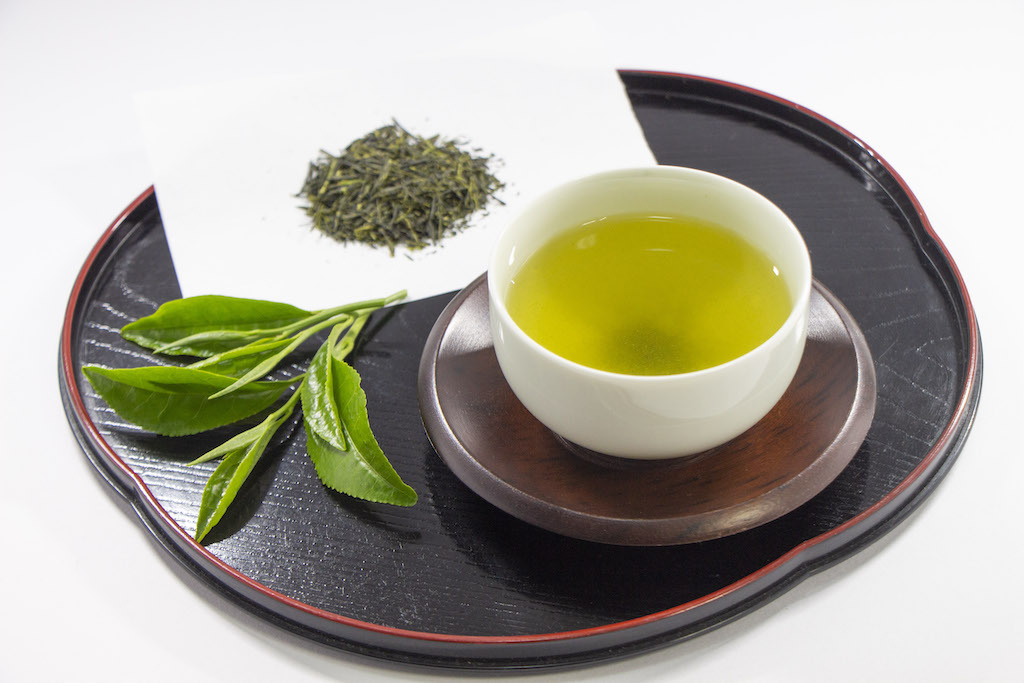
おちゃづけ (お茶漬け) / OCHAZUKE
It’s rice with tea poured on it. Usually some ingredients such as salted plum and salted grilled salmon are put on the rice. The name says “tea”, but people often use instant お茶漬け (OCHAZUKE) with hot water.
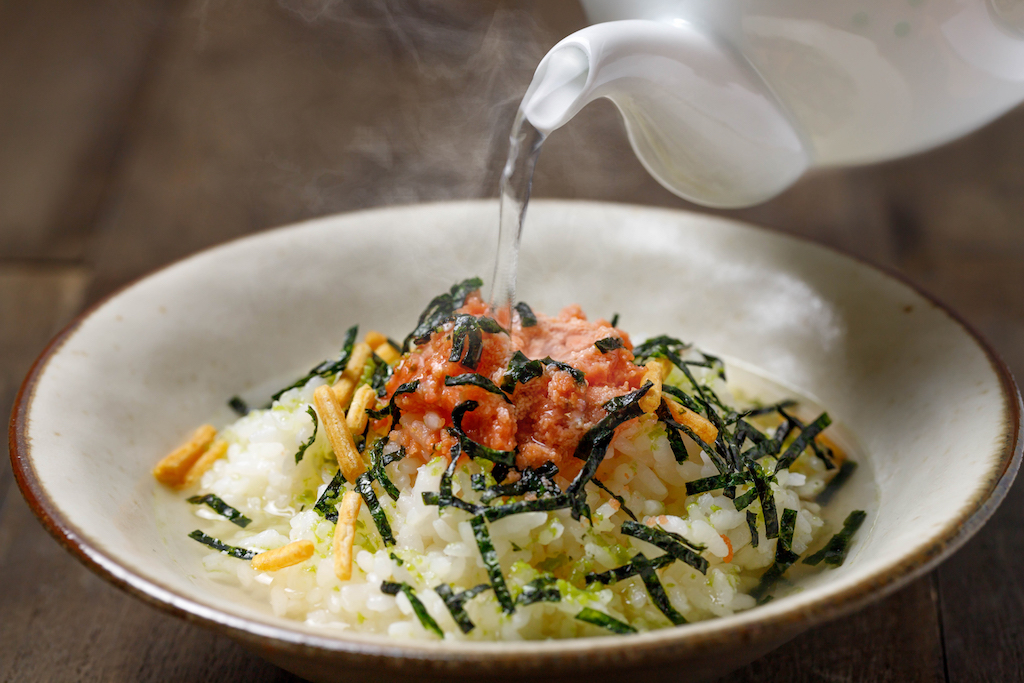
おでん / ODEN
It’s Japanese stew dish made by simmering various type of fish cakes, boiled egg, and vegetables (mainly daikon) in dashi soup.
The soup is made from kombu dashi, bonito dashi, mirin, and soy sauce. It’s very simple, but has complex delicious taste and broth extracted from various ingredients.
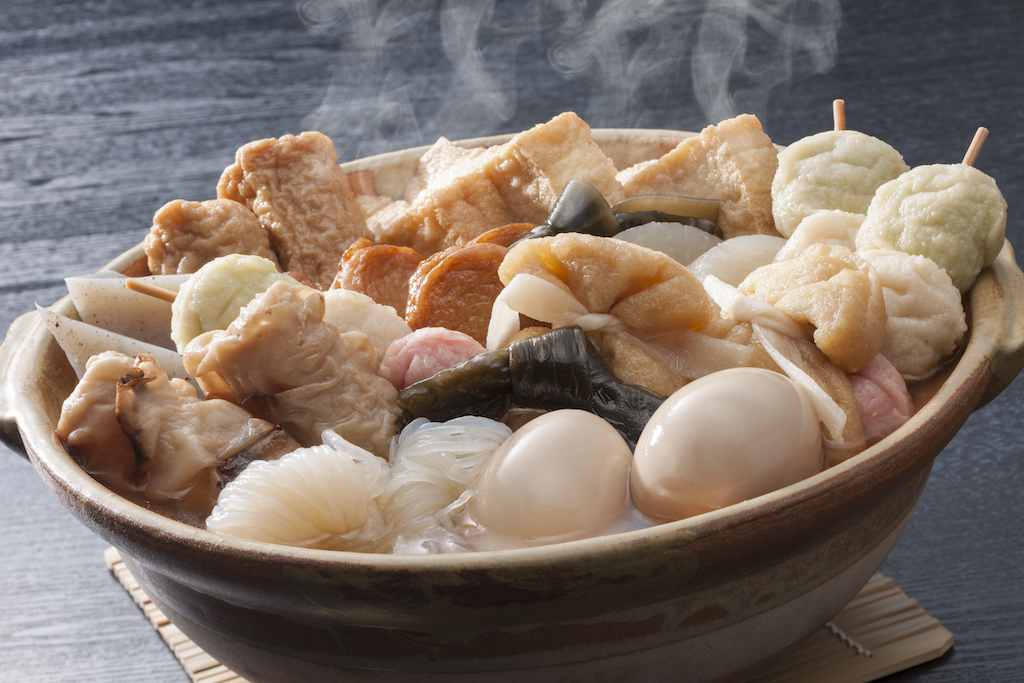
おにおんりんぐ (オニオンリング) / ONIONRINGU
It’s Japanese term for “onion ring”.
I wouldn’t say it’s a major dish in Japan, but you will see it at some hamburger shops or restaurants in Japan.

おにぎり / ONIGIRI
It’s Japanese rice ball. There is onigiri made from simply just white rice with a little salt. We usually put filling in it, for example, salted plum, salmon, okaka, and tuna.
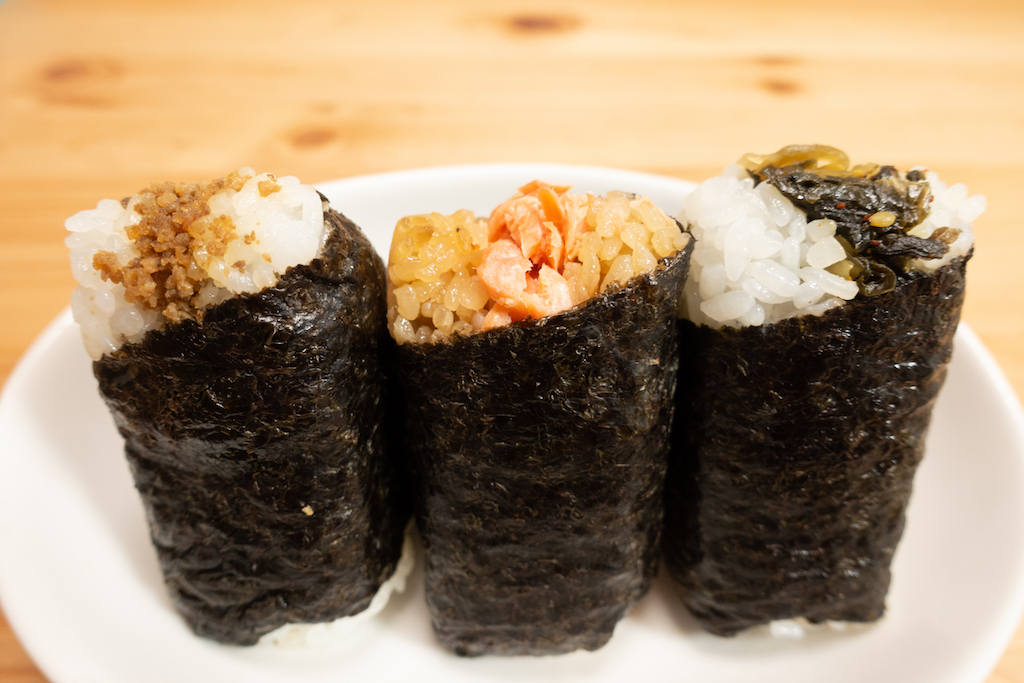
おはぎ / OHAGI
It’s a Japanese traditional sweets which is rice ball coated with sweetened red beans, roasted soybean flour, or sesame. The rice ball is not like a onigiri, but made from glutinous rice.
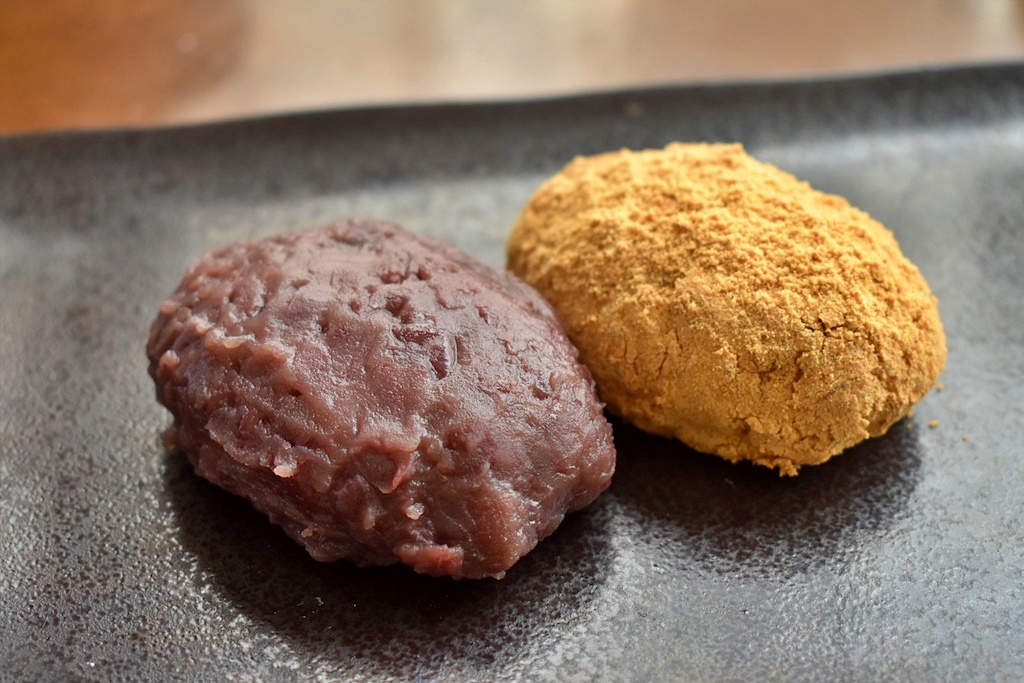
おまーるえび (オマール海老) / OMA-RUEBI
It’s Japanese term for “lobster”.
As with the lobster dishes in other countries, it’s often eaten as the baked lobster with some sauce in Japan.

おむれつ (オムレツ) / OMURETSU
It’s Japanese term for “omelette”.
Although there are several other type of egg dishes that are really popular among Japanese, omelette is one of the choice for us. Ingredients and how to make is almost the same as the American omelette.
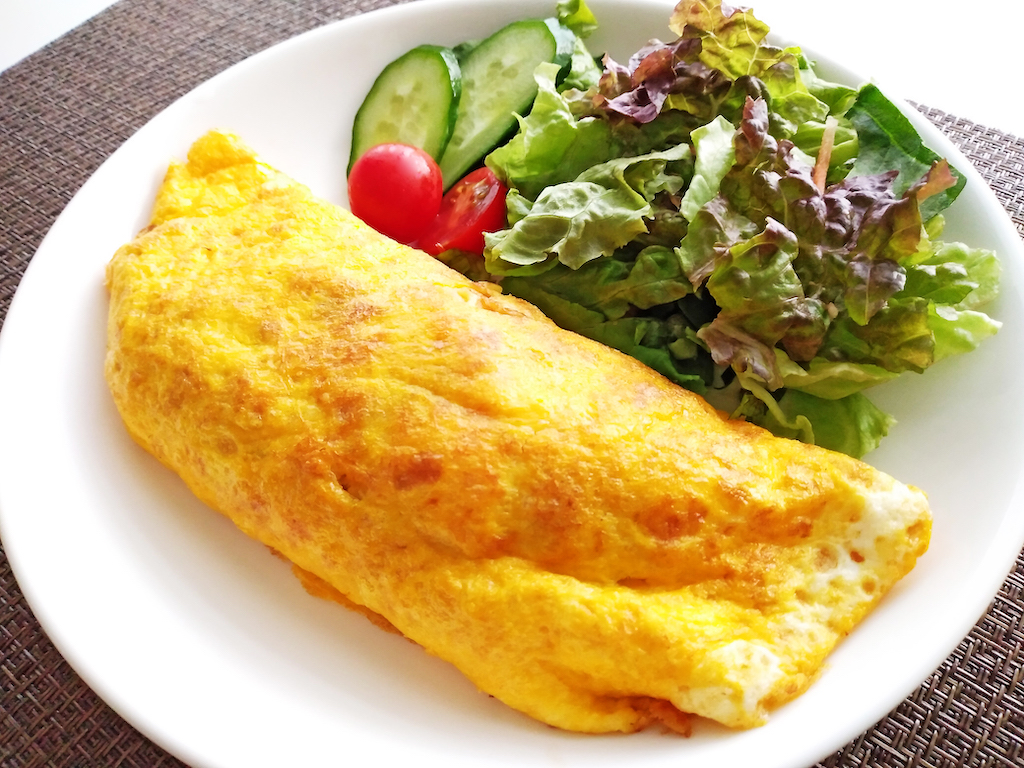
おむらいす (オムライス) / OMURAISU
It’s stir-fried rice wrapped in an omelet.
I would say this is more familiar food to Japanese people rather than omelette. Stir-fried rice for this is usually seasoned with ketchup. Also, you pour ketchup sauce on top too.
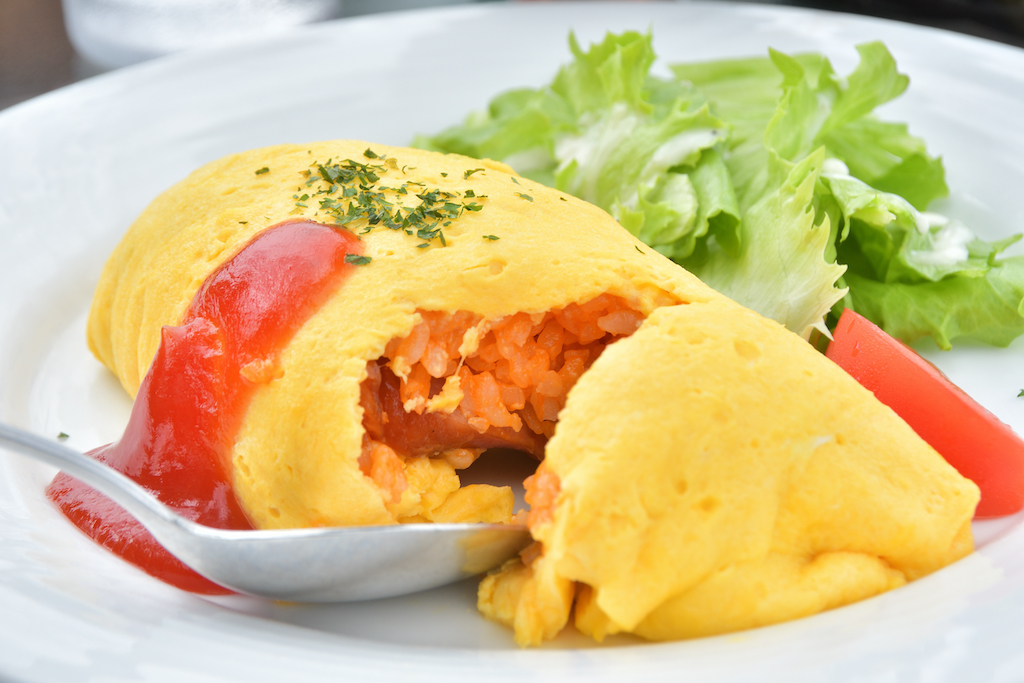
おもち (お餅) / OMOCHI
It’s rice cake made from glutinous rice. We often call it “mochi”. Adding “o” makes it more polite.
Rice cake especially become popular during New Year season. I think it’s because we eat zoni on New Year. There are various ways to eat mochi. You can eat it with soy sauce and sugar, kinako (roasted soybean flour), natto, grated daikon, etc.
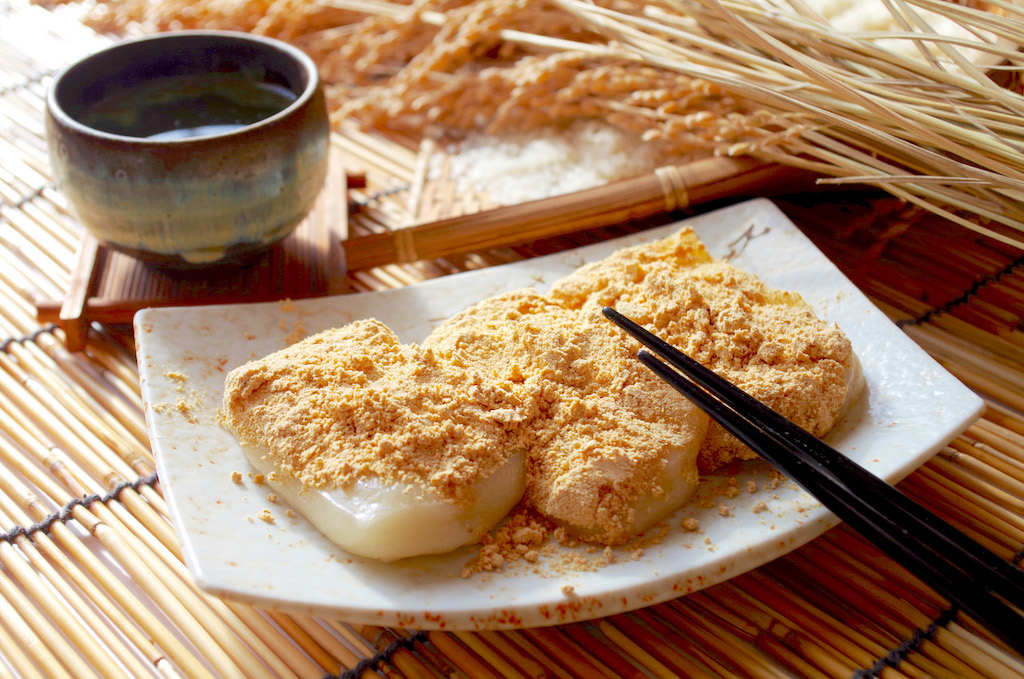
おやき (お焼き) / OYAKI
It’s a Japanese dumpling made of vegetables, sweet bean paste, or any other filling, wrapped in flour or buckwheat dough then roasted. It’s known as a local food of Nagano prefecture.

おやこどん (親子丼) / OYAKODON
It’s a bowl of rice with chicken and eggs, sometimes salmon and salmon roe. You make simmered chicken with sweet-salty soy sauce based sauce with some onion, and pour beaten egg evenly. Then, put it over the rice.
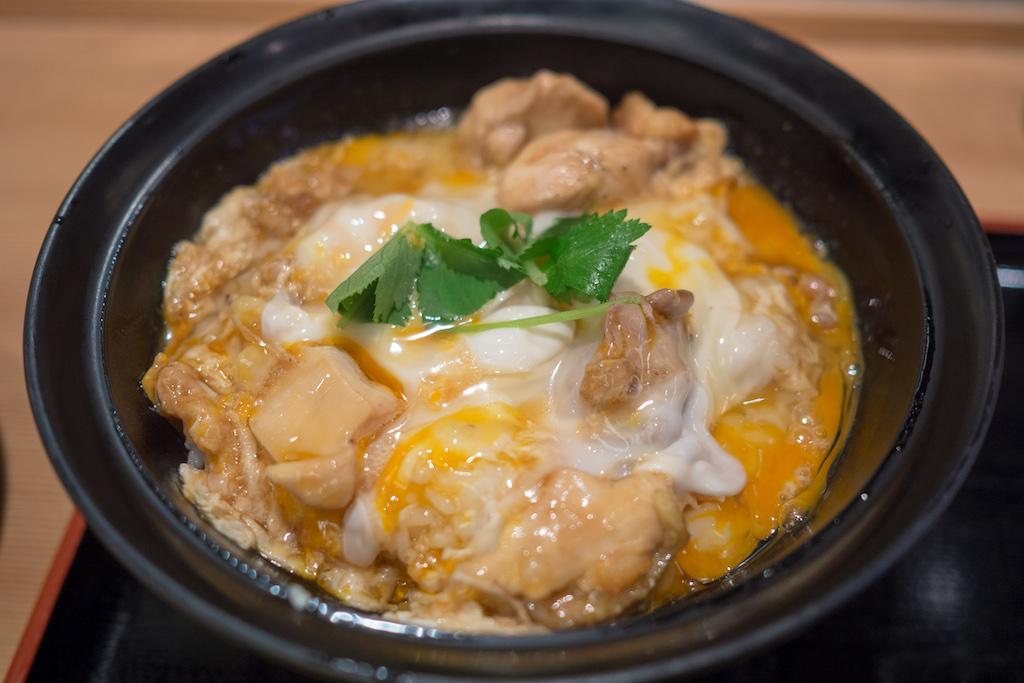
おやつ / OYATSU
It’s Japanese term for “between-meal snack”.
People often take a short break with some drink (coffee or tea) and some snacks. The food can be anything: sweets, fruits, and even some bread or onigiri (rice).
